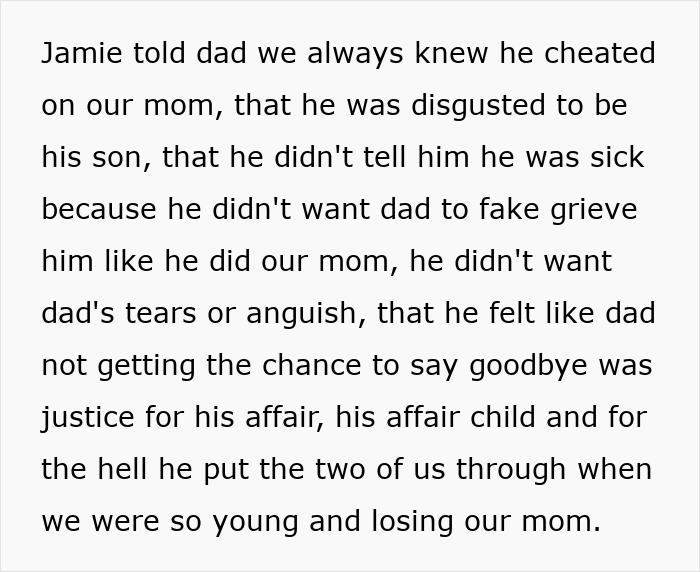Losing someone is never easy. It’s an emotional whirlwind that takes time to fully process. Often, holding on to their possessions—especially something as personal as a final letter—feels like a way to stay connected to them.
For one teenager, this connection became a source of family tension. He shared online how his father insisted on editing his late brother’s letter to include their stepsiblings, hoping it might comfort them in their grief. This request left the teen conflicted, as he felt it would dishonor his brother’s true intentions.
The bond between siblings is often deep and irreplaceable
Image credits: Zinkevych_D / envatoelements (not the actual photo)
A teenager shared online that his father expected him to deceive his step siblings about a letter his late brother had written to him








Image credits: LightFieldStudios / envatoelements (not the actual photo)




Image credits: Desperate_Moon_2723
While people online applauded the teen for his honesty, he revealed that he still had the letter safely with him




Connecting with biological siblings often feels more natural than with stepsiblings

Image credits: zinkevych / freepik (not the actual photo)
For many of us, the bond with our siblings feels almost effortless. Growing up side by side means sharing countless moments—both joyful and challenging—that create an unshakable connection. Whether it’s teaming up against parental rules, fighting over the TV remote, or cheering each other on during milestones, these shared experiences naturally deepen the bond.
When it comes to stepsiblings, though, the dynamic shifts. Unlike biological siblings who’ve grown up together from the start, stepsiblings are brought into each other’s lives later, often as part of significant family changes. Building a connection under these circumstances doesn’t always come naturally and usually requires time, effort, and a willingness to adapt.
One key factor in forming a bond with a stepsibling is your feelings toward your parent’s new partner. If there’s tension or unease about the new family structure, those emotions can unintentionally spill over to the relationship with your stepsibling. It’s natural to feel protective of the life you had before and hesitant about embracing new members into it.
Another challenge can be the circumstances of how the families came together. Was it during a tumultuous time? Are there age gaps or stark differences in interests? These factors can make the process of bonding feel more like climbing a hill than strolling on level ground. But just like with any new relationship, connection comes with shared experiences and understanding, even if it’s built slowly, step by step.
Spending quality time together can help stepsiblings develop meaningful relationships

Image credits: freepik (not the actual photo)
Bonds between stepsiblings often form in small, incremental moments—helping with homework, laughing at the same joke, or supporting each other in tough situations. Over time, these little moments stack up, creating a relationship that may not replicate a traditional sibling bond but can feel just as meaningful in its own unique way.
Encouraging stepsiblings to spend time together can accelerate this process. Finding common ground—whether it’s playing a game, watching a movie, or discovering a shared hobby—helps to break the ice and create memories. These activities don’t have to be grand; sometimes, it’s the smallest gestures that bring people closer.
Dr. Laura Markham, a clinical psychologist and author of ‘Peaceful Parent, Happy Kids,’ highlights the importance of shared activities in fostering sibling relationships. “It can be tough to identify those activities, especially if there’s an age or interest gap. But if you pay attention, you can usually suggest something that will interest both children,” she says. This advice serves as a reminder that building bonds is about being observant and encouraging organic connections.
Ultimately, blending families takes patience and understanding from everyone involved. With time, stepsiblings can form a connection that’s not just about coexisting but about supporting and caring for one another in a way that feels authentic and lasting. The journey may not always be easy, but the destination—a stronger family unit—is worth it.
In this case, the grieving teen chose not to share his late brother’s heartfelt letter with his stepsiblings because of the complexities in his relationship with his father. For him, the letter was a sacred connection to his late brother, and sharing it may have felt like a compromise of that bond, particularly in a situation where trust and comfort were not firmly established.
What are your thoughts on this situation? Share your perspective in the comments below!
Many people believed the teen did the right thing by choosing honesty over deception























Some felt the author was being too harsh toward his half-siblings












